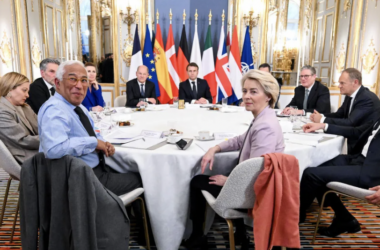In a significant move that has stirred conversation across the nation, the Trump administration is set to implement a sweeping reform aimed at reshaping the structure and culture of the U.S. military. According to information reported by the Associated Press, President Donald Trump is moving forward with plans to fast-track the discharge of military personnel diagnosed with gender dysphoria, effectively reversing previous policies that had opened the door to the integration of openly transgender individuals in the armed forces.
While the decision has sparked debate, many supporters see it as a courageous step toward restoring the integrity, unity, and effectiveness of the American military — a key pillar of national sovereignty and global power. As one senior administration official remarked, “This is about military readiness, not social experimentation.”
A Return to Core Military Values
Since the earliest days of his presidency, Donald Trump made clear that he viewed the military as a fighting force, not a testing ground for ideological projects. Just days after his inauguration, he signed an executive order reaffirming that “military service demands a commitment to truth, discipline, and honor.” In that context, the administration stated that allowing individuals with gender dysphoria to serve in combat roles could create confusion, lower morale, and potentially impair unit cohesion — a risk the President was unwilling to take.
In contrast to the Obama-era policies that embraced the inclusion of openly transgender service members, the Trump administration’s stance is rooted in a more traditional understanding of military discipline and psychological fitness. Gender dysphoria, a recognized psychological condition defined by the American Psychiatric Association as the distress stemming from a mismatch between biological sex and gender identity, is viewed by military leadership under this policy as a disqualifying factor.
The Medical Review Mechanism
The new approach involves medical screenings and reviews for any service member known to exhibit or have a history of gender dysphoria. Commanders will be instructed to initiate an individualized review of medical records for those suspected of or self-identifying with the condition. These screenings will be handled by medical professionals in coordination with military leadership to determine the individual’s fitness for duty.
Critics may claim this is discriminatory, but the administration maintains that the policy is no different than longstanding disqualification procedures for other psychological or physical conditions. “If a soldier has epilepsy, severe asthma, or a chronic mental health condition, they are assessed for fitness. Gender dysphoria should be no different,” a senior defense official explained.
Supreme Court Backs the Policy
The Trump administration’s position received a powerful boost from the judiciary last week when the U.S. Supreme Court allowed the transgender troop ban to be enforced while lower courts continue to review the matter. This decision is widely seen as a validation of the White House’s authority to determine military personnel standards in the interest of national defense.
It’s important to note that the Court did not rule on the ultimate constitutionality of the ban — that issue remains in the hands of the lower courts. However, by allowing the ban to take effect now, the Court has signaled a deference to the executive branch’s judgment when it comes to matters of national security and military management.
A Phased and Humane Transition
In line with the administration’s pragmatic approach, the Pentagon has reportedly issued guidelines that provide a structured timeline and generous terms for affected individuals. Roughly 1,000 openly transgender service members have been notified of the new policy and are being given until June 6 to either resign voluntarily or face formal discharge. In an unexpected show of flexibility, the Department of Defense is offering these individuals enhanced separation pay — nearly double the standard amount — as a means of easing the transition into civilian life.
“The military is not leaving anyone out in the cold,” a Pentagon spokesperson noted. “We are committed to ensuring dignity and respect during this process. But at the same time, we are reaffirming the standards of readiness that have kept this military the most formidable fighting force in the world.”
Backing from Military and Conservative Circles
Many military veterans and conservative thinkers have welcomed the move as a restoration of common sense. Retired General Thomas Mills, a vocal advocate for military reform, praised the policy in a recent interview: “This is not about hate or exclusion — it’s about building the most efficient, effective fighting force. We cannot compromise battlefield performance to accommodate controversial social policies.”
Likewise, influential conservative commentator Heather Mac Donald, author of The Diversity Delusion, has long warned against politicizing the military. “When identity politics overrides battlefield reality, everyone loses,” she stated during a segment on Fox News. “Trump’s decision reflects the sober truth that the military is not an instrument for cultural change — it’s a machine for winning wars.”
Supporters of the new policy see it not only as a personnel decision but as a broader cultural shift. For too long, critics argue, military standards have been eroded by political correctness and a push for inclusivity at the expense of performance.
By refocusing on combat effectiveness, the Trump administration is sending a clear message: military service is a privilege, not a platform. Those who serve must meet the psychological, physical, and moral standards required by the job — not by the latest trends in academia or activism.
This cultural recalibration may also serve as a precedent for other sectors of government. In recent years, institutions such as the CIA and the State Department have followed progressive trends, launching diversity and inclusion initiatives that some argue have distracted from their core missions. The Pentagon’s return to fundamentals could inspire a broader rollback of ideological overreach across federal agencies.
Reactions from Across the Spectrum
Predictably, left-leaning media outlets and activist organizations have voiced strong opposition to the policy. Advocacy groups such as the Human Rights Campaign and the ACLU have called it discriminatory and vowed to continue legal challenges. However, it’s worth noting that public opinion on the issue is more nuanced. While many Americans support equal rights for transgender individuals in civilian life, a 2023 Rasmussen poll found that a majority of respondents agreed the military should not be compelled to accommodate individuals undergoing gender transition.
Moreover, in communities with high rates of military enlistment — such as rural and Southern states — the policy has met with strong approval. Voters in these regions often prioritize discipline, cohesion, and clear standards over cultural accommodation. “We send our kids to serve, not to be part of some progressive lab experiment,” said Mark Johnson, a Marine Corps veteran and father of two active-duty soldiers from Texas.
As the Trump administration prepares to fully implement this policy, the debate is far from over. Legal challenges will continue, and future administrations may seek to reverse course once again. But for now, the message from the White House is clear: America’s military will prioritize strength, discipline, and preparedness above all else.
President Trump has never been one to shy away from controversial decisions when he believes they serve the nation’s interest. His executive order on transgender service members, supported by the Supreme Court and backed by the Department of Defense, represents a bold affirmation of that leadership style. Whether history judges this as a watershed moment or a temporary recalibration, one thing is certain: Trump has put military readiness back at the center of defense.




